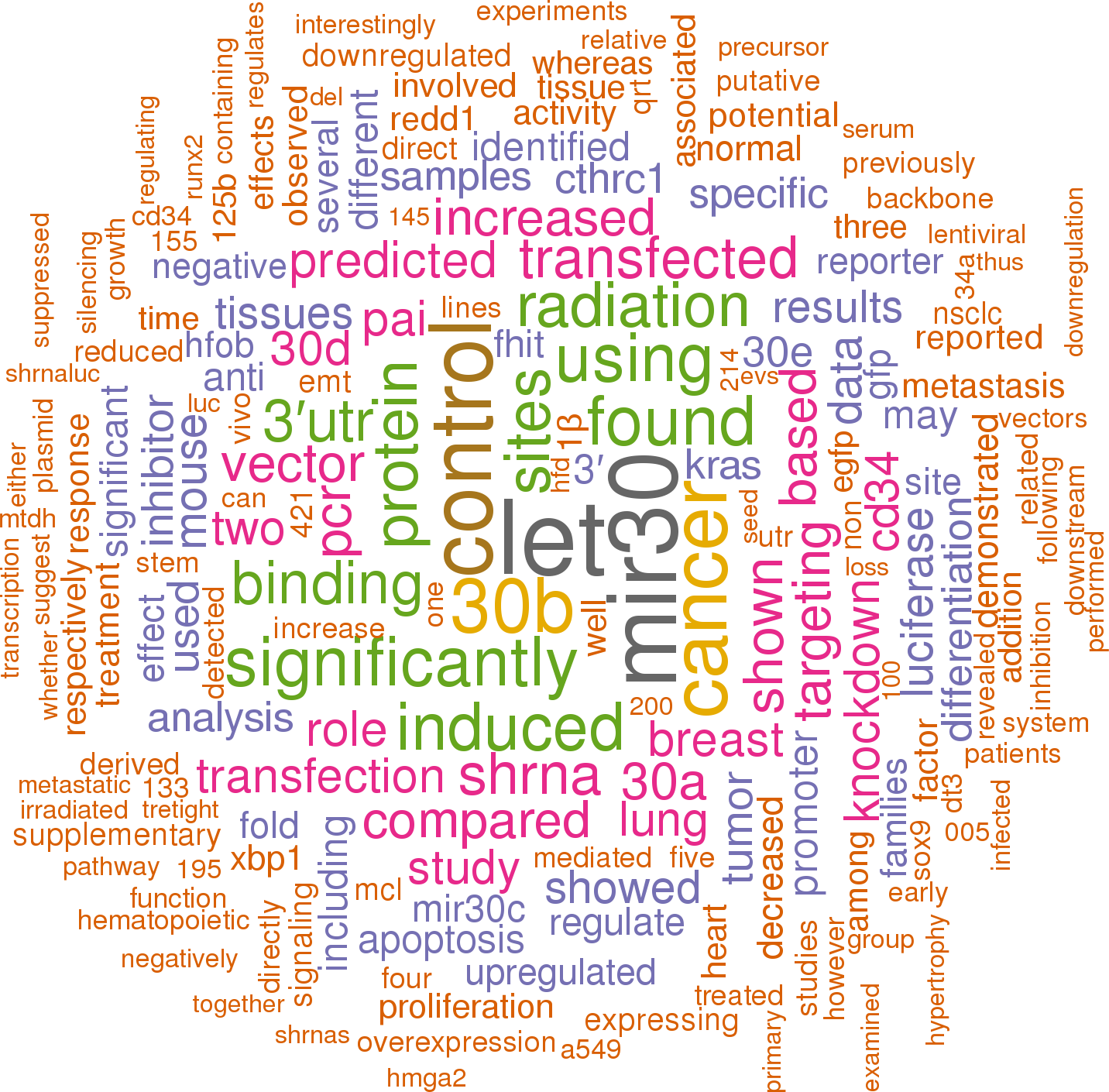Accession
MI0000736
Symbol
HGNC:
MIR30C1
Description
Homo sapiens
hsa-mir-30c-1 precursor miRNA
Literature search

384 open access papers mention hsa-mir-30c-1
(1839 sentences)
(1839 sentences)
Sequence
279698
reads,
1045
reads per million, 159 experiments
accaugcuguagugugUGUAAACAUCCUACACUCUCAGCugugagcucaagguggCUGGGAGAGGGUUGUUUACUCCuucugccaugga
.(((((..((((...(.(((((((.(((...(((((((((....(((...)))))))))))).))).))))))).)...))))))))).
.(((((..((((...(.(((((((.(((...(((((((((....(((...)))))))))))).))).))))))).)...))))))))).
Structure
a cu ugu U U ACA guga c ccaug guag g GUAAACA CCU CUCUCAGCu gcu ||||| |||| | ||||||| ||| ||||||||| ||| a gguac cguc C CAUUUGU GGG GAGGGUCgg ugg a -- uuC U U --A ---- a
Annotation confidence
High
Do you think this miRNA is real?
Comments
miR-30c was cloned from mouse heart and brain tissues by Lagos-Quintana et al. [1]. Two human hairpin precursor sequences are predicted based on homology with the mouse sequences, on chromosomes 1 (MIR:MI0000736) and 6 (MIR:MI0000254) [3]. Expression of miR-30c was later validated in human HL-60 leukemia cells [2].
Genome context
chr1: 40757284-40757372 [+]
Clustered miRNAs
1 other miRNA is < 10 kb from hsa-mir-30c-1
| Name | Accession | Chromosome | Start | End | Strand | Confidence |
|---|
Mature hsa-miR-30c-5p
| Accession | MIMAT0000244 |
| Description | Homo sapiens hsa-miR-30c-5p mature miRNA |
| Sequence | 17 - UGUAAACAUCCUACACUCUCAGC - 39 |
| Evidence |
experimental
cloned [2,4-6] |
| Database links |



|
| Predicted targets |



|
Mature hsa-miR-30c-1-3p
| Accession | MIMAT0004674 |
| Description | Homo sapiens hsa-miR-30c-1-3p mature miRNA |
| Sequence | 56 - CUGGGAGAGGGUUGUUUACUCC - 77 |
| Evidence |
experimental
cloned [5] |
| Database links |



|
| Predicted targets |



|
References
|



